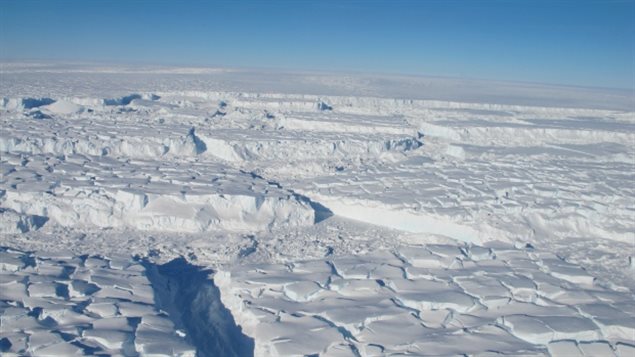While we think of the earth’s gravity as uniform and constant, there are in fact very slight variations over mountains, lakes, and other geological features, and where density of the earth varies.
Now, it’s been determined that climate change is having an effect upon gravity.
Scientists have been using satellites to monitor climate induced ice-loss in the Antarctic where ice loss has been increasing between 2011 and 2014, especially in the western Antarctic region.
Ice sheet collapse inevitable
“The collapse of this sector of West Antarctica appears to be unstoppable,” said glaciologist Eric Rignot in May of this year.
He is a University of California- Irvine earth system science professor and with NASA’s Jet Propulsion lab.
He says, “The fact that the retreat is happening simultaneously over a large sector suggests it was triggered by a common cause, such as an increase in the amount of ocean heat beneath the floating sections of the glaciers.”
“Every process in this reaction is feeding the next one”, he says adding that curbing emissions from fossil fuels to slow climate change will probably not halt the melting but it could slow the speed of the problem, Rignot said.
Ice loss affecting gravitational field
Then when scientists at the Geodetic Research Institute in Germany, Delft University of Technology in the Netherlands, the Jet Propulsion Lab in the U.S. and the Technical University of Munich — compared the gravitational measurements from the GRACE mission, a satellite that examined ice loss, with readings from the European Space Agency (ESA) GOCE satellite which measures the gravity field, they discovered that reductions in gravity readings mirrored the ice loss readings.
While the miniscule lessening of gravitational pull certainly doesn’t mean things will eventually start floating up into the air, the far more worrisome concern is the melting ice and sea level rise.
Melting Antarctic and Greenland ice sheets combined are losing as much as 500 cubic kilometers, or 450 billions of tons of ice to the oceans every year. The data from CryoSat-2 also shows that between 2003-2009 and 2011-2014 shows ice loss has increased by a factor of 2.5 times in Antarctica and a factor of 3 for Greenland
Ice Loss Antarctic-Nature Geoscience (abstract)
Runaway Glaciers in Antarctica







For reasons beyond our control, and for an undetermined period of time, our comment section is now closed. However, our social networks remain open to your contributions.